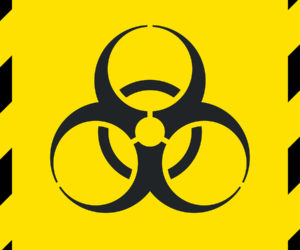
Sorry, your browser is not compatible with this application. Please use the latest version of Google Chrome, Mozilla Firefox, Microsoft Edge or Safari.
Transportation Content

Annual Review: Stories of Transportation...
Innovation in transportation isn’t just about moving people and goods—it’s about building a safer, more efficient, and resilient future. The U.S. DOT Volpe Center has spent over five decades pioneering…
Learn More


Pocket Guide to Transportation 2025
Curious about how transportation shapes our daily lives and the environment? The Pocket Guide to Transportation 2025 is packed with key statistics on everything from highway travel to greenhouse gas…
Learn More


Transportation Security Administration
This overview traces how aviation security in the United States has evolved since 9/11, highlighting changes in personnel, processes, and screening technologies. It shows how intelligence-driven procedures, expanded workforce roles,…
Learn More


Transportation Statistics Annual Report 2024
The Transportation Statistics Annual Report 2024 provides a detailed look at the state of the U.S. transportation system, highlighting key trends in infrastructure, safety, and sustainability. This 30th-anniversary edition explores…
Learn More


Unlocking Government Efficiency with AI
Indiana’s Department of Transportation transformed a massive, manual reporting effort into an AI-powered workflow using Gemini and Vertex AI. Faced with scattered policies, tight deadlines, and security constraints, the team…
Learn More


2024 Emergency Response Guidebook
The U.S. Department of Transportation’s Pipeline and Hazardous Materials Safety Administration (PHMSA) has just released the 2024 edition of its Emergency Response Guidebook (ERG), a vital resource for emergency responders…
Learn More


Consumer Safety Tips for Lithium-Ion...
Did you know the lithium-ion batteries powering e-bikes and scooters are considered hazardous materials? These batteries store a lot of energy and, if not properly maintained, can pose fire risks…
Learn More


2024 Progress Report on the National Roadway...
At the U.S. Department of Transportation, safety is their top priority. Yet, in recent years, we have seen alarming increases in roadway deaths. After spiking during the pandemic, these numbers…
Learn More


Commercial Space Transportation: FAA’s Oversight...
The number of commercial launch and reentry operations carrying humans is a small proportion of the overall number of commercial space operations—about 10 percent in 2023—but it is growing. This…
Learn More


Transportation Security & Explosives...
The Facial Hue Detection System (FHDS) brings innovation to biometric technology, ensuring accurate and fair representation of skin tones across diverse populations. By calibrating imaging systems using precise skin tone…
Learn More


U.S. Port Infrastructure: DOT and DHS Offer...
U.S. ports are vital to national and global trade, yet they face increasing threats from natural disasters. The Departments of Transportation (DOT) and Homeland Security (DHS) provide funding and resources…
Learn More


The Cost of the Coast Guard’s Polar Security Cutter
The Homeland Security Act of 2002 created the Department of Homeland Security and transferred the Coast Guard from the Department of Transportation to the new department. The law listed 11…
Learn More


Biometric Identity Disambiguation
The Biometric Identity Disambiguation (BID) system, developed by the Department of Homeland Security’s Science and Technology Directorate and TSA, revolutionizes identity verification at security checkpoints. By combining biometric data like…
Learn More


Real-Time Advanced Imaging Technology
Navigating airport security could soon feel seamless with the introduction of Real-Time Advanced Imaging Technology. Instead of the traditional pause-and-pose screening, this next-generation system enables walk-by scanning, reducing wait times…
Learn More


Waterway Risk Assessment
The Waterway Risk Assessment initiative, led by DHS Science & Technology and the U.S. Coast Guard, is revolutionizing maritime safety with a quantitative risk modeling framework. This innovative system calculates…
Learn More


